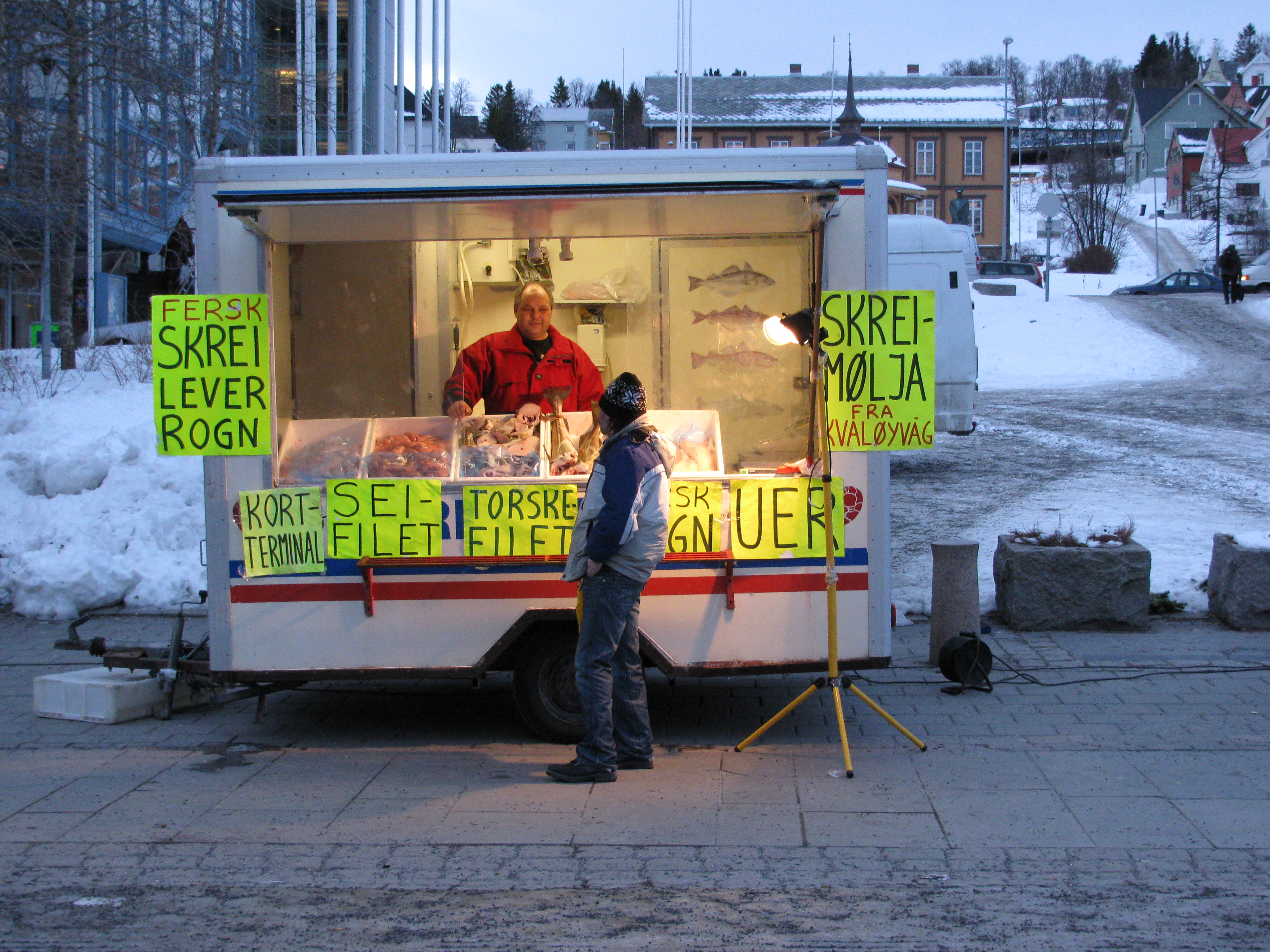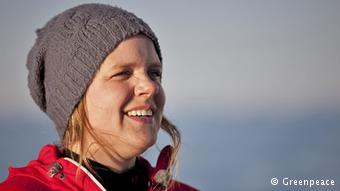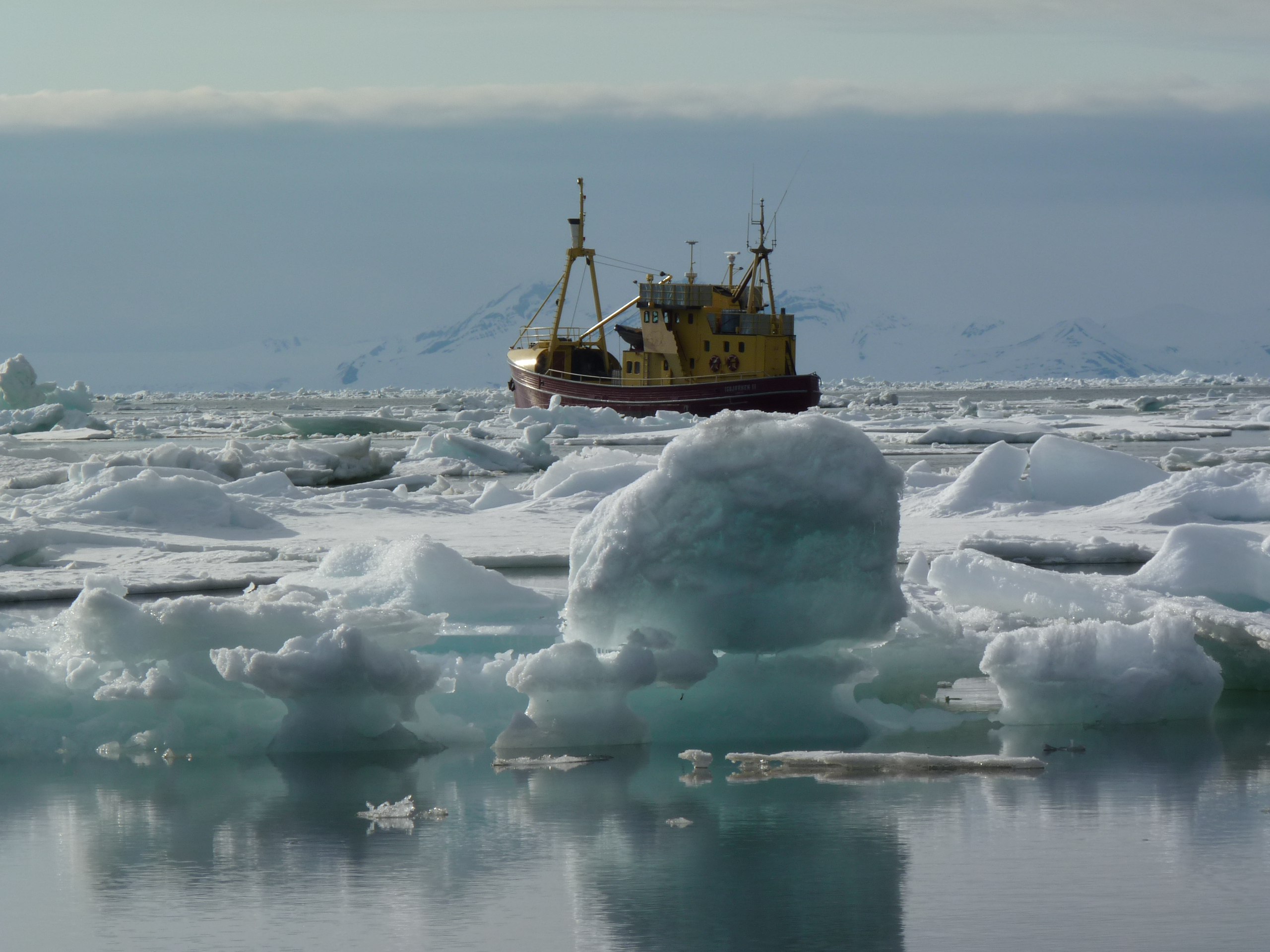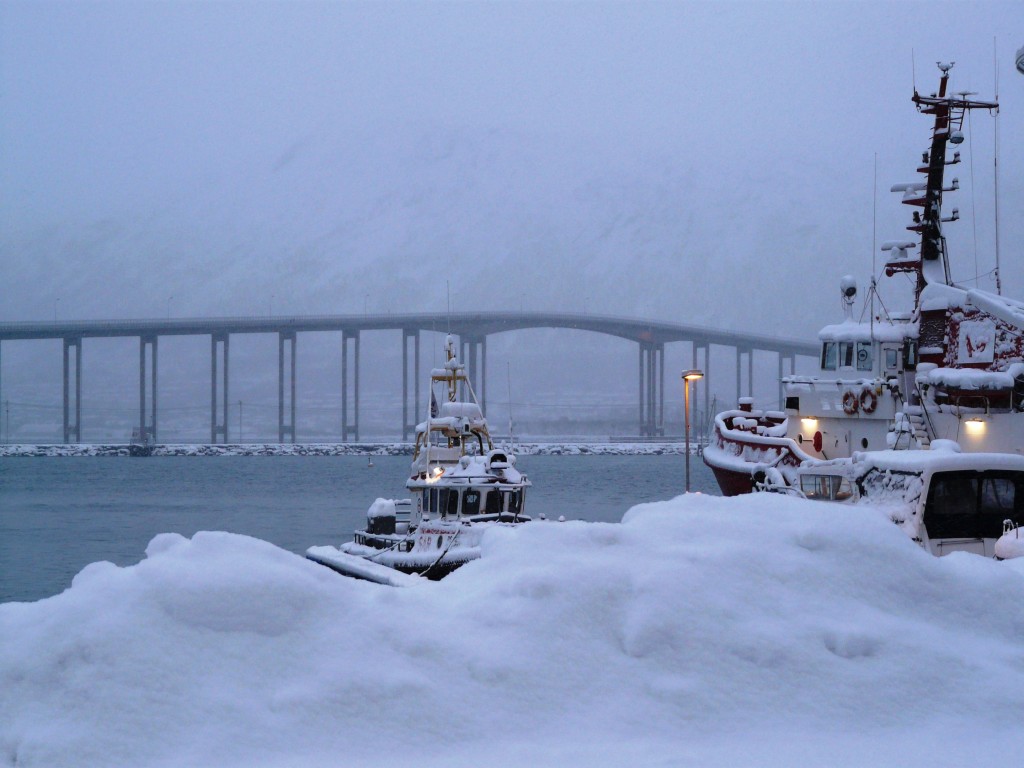Search Results for Tag: fishing
Arctic off limits for giant trawlers?
This past winter, one of the favourite fish dishes being served up here in Germany was skrei, or Arctic cod. I had the feeling this was a new trend in this part of the world, and found myself wondering why there seemed to be more about and whether this could have anything to do with climate change and easier access to fish stocks which were further north before.
My research brought me very quickly to a campaign by Greenpeace, which is tackling this very issue. The website describes the increase in large-scale fishing as a “new threat” to the Arctic:
“Investigations by Greenpeace have shown industrial fishing fleets using destructive bottom trawling are invading previously pristine areas of the Barents Sea in the Norwegian Arctic.”
Greenpeace carried out an investigation focused on part of the Norwegian Barents Sea, including an analysis of vessel movements over three years to September 2015. I called up Frida Bengtsson in Norway, a Greenpeace campaigner and author of the report on the investigation, just published in March, entitled “This Far, no Further. Fishing in the Arctic.”
She told me what she and her fellow conservationists had found out and why they are worried:
“What we’ve seen over the years is that the cod fishery that comes from Norway and provides markets in Europe and also travels to China, North and Latin America, has been expanding further north. So our research shows we are moving further and further north and into the Arctic. These areas have previously been covered by sea ice. Up to half the sea ice cover in the Barents Sea has disappeared since the 1980s”.
Given that the sea ice is disappearing anyway, I wondered whether it wasn’t a natural thing to catch some of the fish in the region:
“Research has just started to look at what’s below the sea ice on the seabed, and we’ve found things they haven’t found in other parts of the Barents Sea where extensive fishing has taken place for longer periods of time. For example, they have found sea pens, up to fifty years of age and up to two metres in height, which is very unique. So we’re calling for a precautionary approach, to not expand into these vulnerable areas but leave them alone and replace the protection the ice once offered with regulation.”
So in fact the problem is not the catching of a limited number of fish, but the effect of the large-scale industry on other species:
“We look at the size of the Barents Sea fishery. It’s very big. There are over 200 factory trawlers licensed to fish in the Barents Sea, and the footprint on the ocean environment is very large. We’re concerned that if this fishery is allowed to move into areas that haven’t been fished before, it will have a very negative impact. We’re mostly concerned about bottom trawling, where you use heavy trawl doors that can weigh several hundred kilos to put the net out and then drag it along the seabed with chains. The creatures on the seabed are very vulnerable and soft, and when they’re hit by these massive trawls they are destroyed.”
I asked what kind of preventive measures Bengtsson and her colleages would like to see?
“We think industry should move out of this area now, and we want to see Norway step up and protect these areas. We think that’s in line with what people generally want when it comes to Arctic protection. It would also mean Norway would meet their commitment towards the 2020 goals the world has set on protecting the world’s oceans.”
Alongside Norway, another major player in the region is Russia. I wondered if Greenpeace was also targeting Russian fishing?
“The Barents Sea fishery is shared between Norway and Russia. But most of the fishing activity actually takes place inside Norway. So we believe that working with the Russian fisheries, the markets that they sell to and the Norwegian government, we will find the right balance. But of course it’s also going to be important to see protection happening all over these vulnerable areas. And the Russians have already acknowledged the vulnerability for their part and have noted these as sensitive areas.
So far, the organization says it has had some interesting reactions both from consumers and the fishing industry to its report:
“It is very clear that people don’t consider that trawling for cod in the Arctic is something that is sustainable. And I think for the industry, it’s important to be at the forefront of sustainability. The indications we have from industry suggest they think it’s important and they want to take preventive measures. That is very encouraging, because I think it’s always good when we can work together. At the moment we’re seeing industry taking initiatives to find some solutions. That is interesting because it’s in line with the same pattern we’ve seen in other places, for example around the soya moratorium in Brazil. There, industry agreed to take preventive measures, to not expand soya production into the Amazon.”
Of course all this relies on pressure from consumers, using their purchasing power to make fishing companies do certain things, like stay out of certain areas. But can ordinary people find out fish is coming from an area of the Arctic it should not be coming from? Not so easy, it seems:
“Unfortunately, today that is very difficult for a consumer. But even so, it’s very important that you ask the question. If more and more consumers start asking where their fish comes from, that will lead to better labeling. We have seen initiatives in Europe where some fish is labeled, with catching area and the fishing boat, but of course that’s only a very small share. We would like to see that happening with the whole of the seafood market”.
Plenty of food for thought there, for anyone who eats fish as well as the industry that brings it from the ocean to the table.
Arctic fish and chips? Listen to my interview with Frida Bengtsson.
Norway focuses on “Humans in the Arctic”
With the Annual “Arctic Frontiers” conference in Norway’s “Arctic capital” Tromsö looming large on the horizon from January 19th to 24th, I was interested to see that the conference theme of “Humans in the Arctic” was the subject of an event held by the North Norway European Office in collaboration with The Arctic Institute and Maritimt Forum Nord.
Those of us who are too far away to be able to drop in to seminars like this ahead of the big event can thank Kathrin Keil and Andreas Raspotnik from the Arctic Institute for keeping us up to date with a short report summarizing the event.
It is not surprising to see an increase in the number of conferences and seminars on Arctic development, given the climate-change related changes to the region which feature here on the Ice Blog. I have the sense that there is considerable competition between different Arctic players on all levels to become the focus of development activities.
In the event report, Raspotnik and Keil refer to the “Tromsö High North Cluster”. According to Anne Husebekk, the rector of the University of Tromso (UiT), as quoted in the paper, “The Tromsö High North Cluster can play a crucial role in providing the necessary knowledge for sustainable development in the Norwegian Arctic”. On my visits to Tromsö, I certainly had the feeling that people were working hard at this.
In my last blog post I mentioned the campaign underway to establish an EU Arctic Info Centre in Rovaniemi in Finland.
Understandably, all the Arctic states are keen to have a large chunk of the cake and stress their own expertise and infrastructure. But in an area like the Arctic, international cooperation is clearly essential.
Oil and gas drilling and increased shipping are usually the first issues that come to mind in connection with Arctic development, with all the safety, logistic and environmental challenges they bring with them. But the High North is also a key area for fishing, an activity which may not exactly benefit from extended industrial or commercial activity, not to mention the pressures from climate change. One point that attracted my attention in the conference report was a presentation by Trygve Myrvang, Managing Director of the Norwegian Fishermens Sales Organization, looking at the sustainability of fish stocks in the Norwegian North and factors affecting it. “Myrvang underlined the necessity of cooperation between the fishery and energy industry in the High North, both interested in the same offshore areas, say Raspotnik and Keil.” Indeed. Interesting times ahead. And plenty of scope for discussion at Arctic Frontiers. The Arctic Institute will also be holding a side event on “infrastructure-related challenges in the Arctic”. There is certainly no shortage of those. I hope I can be there to join the forum.
“Global Contact” in the Town on the Icefjord

Ilulissat was once a small trading post. Nowadays it has 4,500 inhabitants, and the number is growing rapidly.

You can smell fish in quite a few parts of the town. Fishing is the number one industry

It happens on a commercial scale, particularly for halibut and shrimps. The town has a shrimp processing factory. The fish factory has moved further south, and people tell us the trend is increasingly towards factory ships, which process the fish as they’re caught.
Administration is the 2nd biggest employer. Ilulissat is the centre for a huge area around it, going right up to Quanaag in the far north. Tourism is the 3rd factor. It’s growing, but currently suffering from the world economic crisis. There are actually very few tourists in the town right now. The town still feels like boom-town, and the civil engineer tells me all the building work is the rush to build new houses for the growing population in the very short building season, before everything has to stop for the winter in October.

Ilulissat’s main attraction are the icebergs, floating in the fjord after breaking off from the Kangia glacier or Jakobshauen, which was the Danish name for it and the town. This is the most “productive” glacier in the northern hemisphere, discharging ice from the inland ice sheet into the sea at a tremendous rate. More about that later. The constantly changing panorama of icebergs of all different shapes and sizes creates the very special identity of Ilulissat.
The icefjord was added to UNESCO’S World Heritage List in 2004 because of its dramatic beauty and its unique glaciological characteristics. The organisation has now opened an office in the town that keeps an eye on it and supports measures to protect it – with a little help from friends like the volunteers brought here by a group called MS.

Lars from Germany and Martin from Switzerland are two of a group of 10 young people spending their summer holidays as volunteers here. They’ve helped organise a traditional music festival in one of the remote northern towns. Now they’re helping Naja Habermann, who runs the UNESCO office, to mark the hiking paths – like the one that took me along the ice fjord yesterday – which help people appreciate the natural beauty of the region without having too much of an impact on the countryside. These are the people who spend the day walking the paths and painting the markers. More power to you folks!
Mellemfolkeligt Samvirke, “ms act!onaid denmark” is the ngo that brings them here, with its “global contact” programme. They come from a variety of European countries. When I asked them why they do it, Lars and Martin both told me they want to do something more meaningful than lie on a beach all summer, and they’re keen to get to know other peoples and cultures. They also see it as a unique opportunity to get to a remote region of the world they would otherwise fail to see. I asked them whether climate change was important to them, against the background of this glacier discharging icebergs at an increasing rate. While they both said this hadn’t been their reason for coming here, they are very concerned about what’s happening and feel strongly the industrialised west should reduce emissions and its footprint. Talking to young people in Greenland, they found it interesting to hear a different view here. Awareness of the problems is not so high – and some of the people they talked to were happy about being able to grow more food in southern Greenland.

Caroline (right) and Sisse are coordinating the project, both here on a voluntary basis. They’re committed to promoting intercultural dialogue and bringing young people from different backgrounds together to work on projects like protecting the world’s heritage.

“It’s a dog’s life” in Ilulissat. Sled dogs have enforced holidays at least until October.




















Feedback